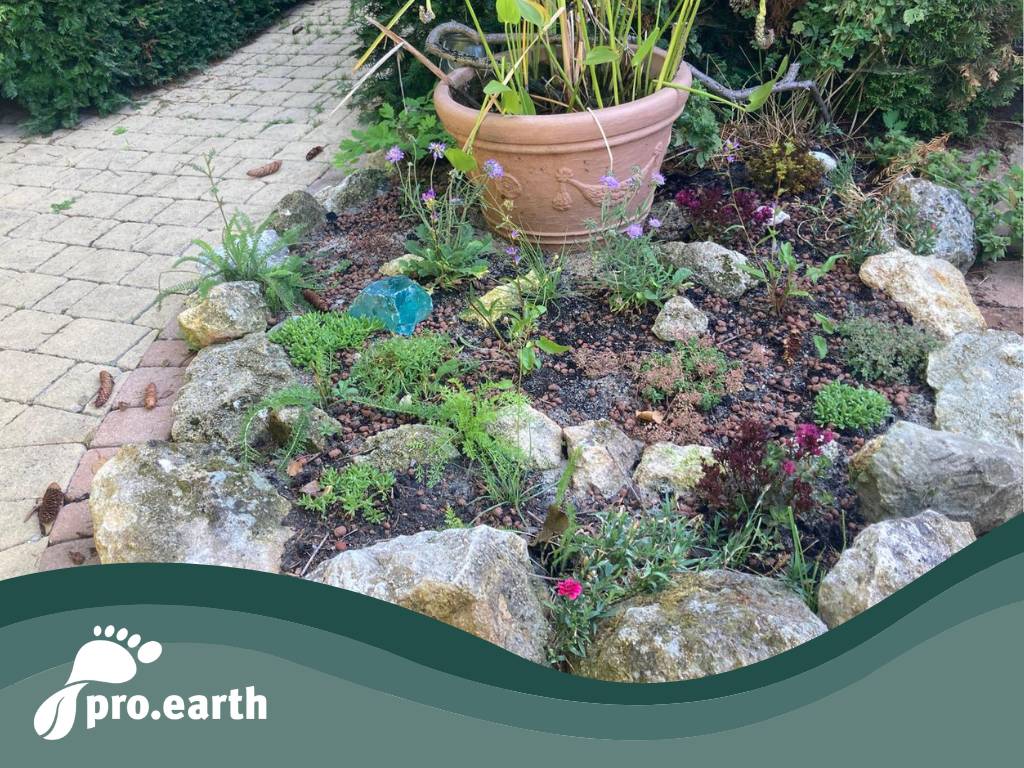Create a dry bed yourself

There is a small patch in the entrance area of our garden that we have been trying to landscape for years. There are stone slabs underneath, so there is no direct contact with the ground. We have therefore tried to create a raised bed with stones. Our first attempt to create a wildflower bed here in front of a mini pond in a pot failed because it was mainly nettles and a very unpleasantly aggressive type of grass that spread. So we now had the idea of planting real drought artists there.
The preparation
Since not all the plants could be weeded away easily, we laid a thick layer of cardboard on top, watered it and then built up a layer about 10 centimeters high of PIT-FREE soil, sand and expanded clay mixed with soil from molehills from the garden, whereby - as is usually the case - we had slightly too little material available for the size of the area.
T I P P : Soil from molehills is a valuable resource - please always collect it instead of simply raking it away!
It is important that the soil contains a high proportion of sand so that moisture does not remain in the soil for too long but is drained away, otherwise drought-loving plants are unhappy and we want to avoid that. We have added expanded clay because there is no contact with the soil and only the mounded area itself can store moisture. Our plan is to stop watering this bed after a short acclimatization phase.
As we had no particular connection with low rockery plants, our aim this time was to choose predominantly low plants, also so that the mini biotope in the pot would continue to show to advantage. Dry and wet biotope on 2 m2.

We have chosen the following plants:
-
-
-
- lower fat hens
- Midday flower
- Cushion thyme
- Annual carnation, another type of carnation
- Knotted bellflower
- lower scabiosa
- Stonecrop
- Houseleek
-
-
The main focus is therefore on succulent species. We left the common yarrow in the bed, which had sprouted on its own.
We will cover this bed with a layer of gravel, because if there's one thing we don't want, it's weeding!
In our front garden we have already had great experiences with
-
- Stonecrop
- Wollziest
- Spur flower
- Spurge
in a very dry bed without irrigation. However, these are all higher, so were not so suitable for the new location.
We #Beetschwestern have dedicated an entire article to drought-loving plants!
https://news.pro.earth/2023/07/13/welche-pflanzen-sind-hitzebestaendig/






